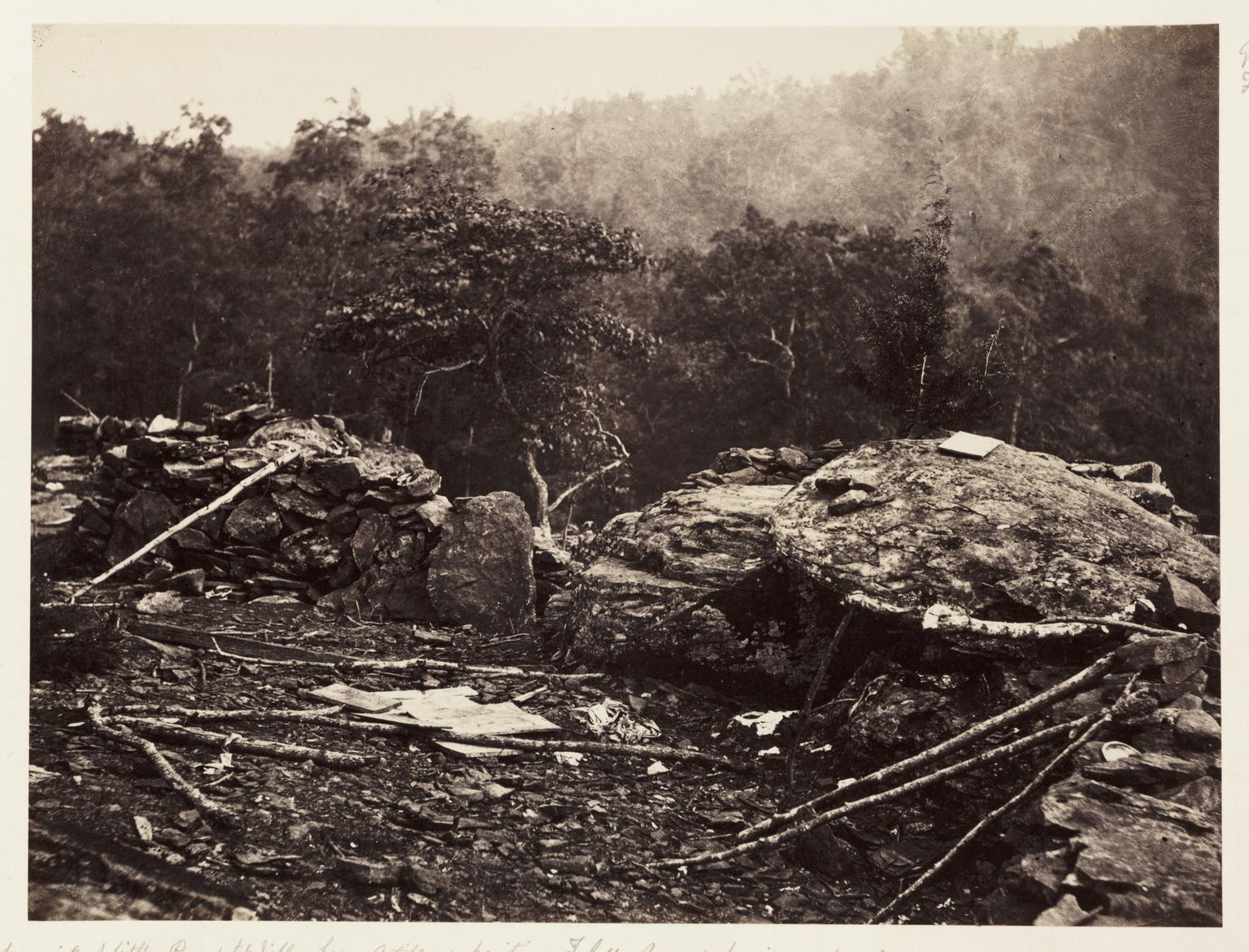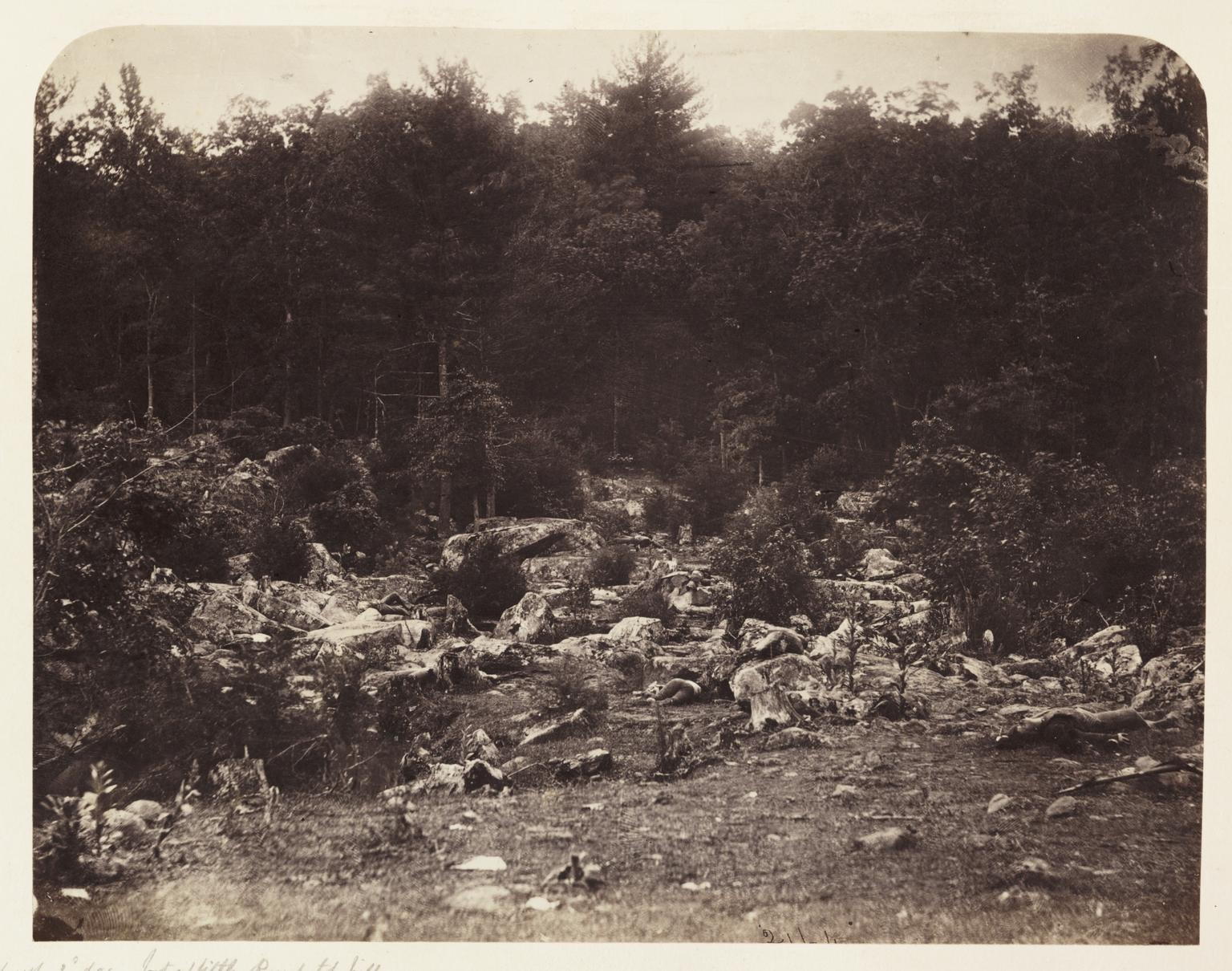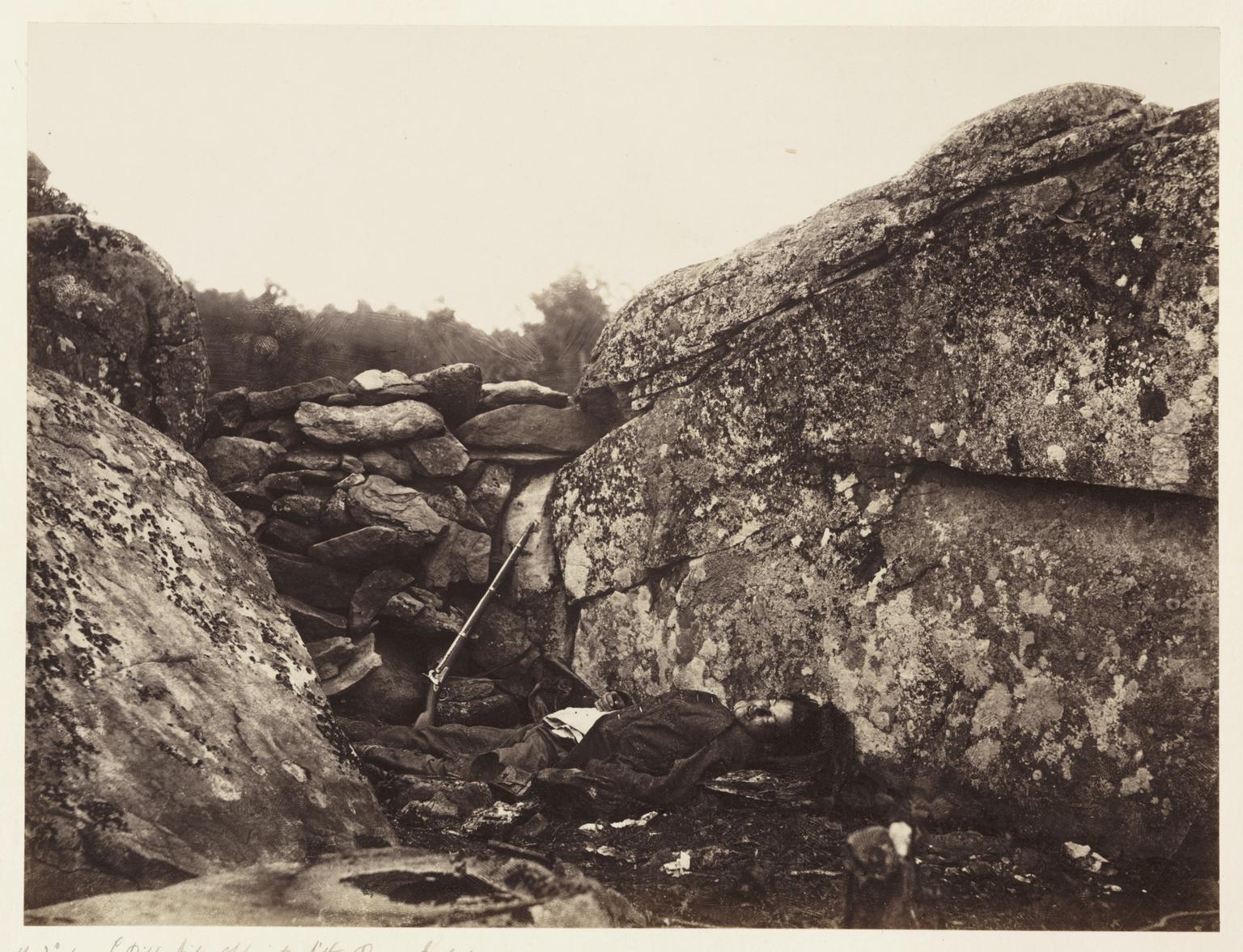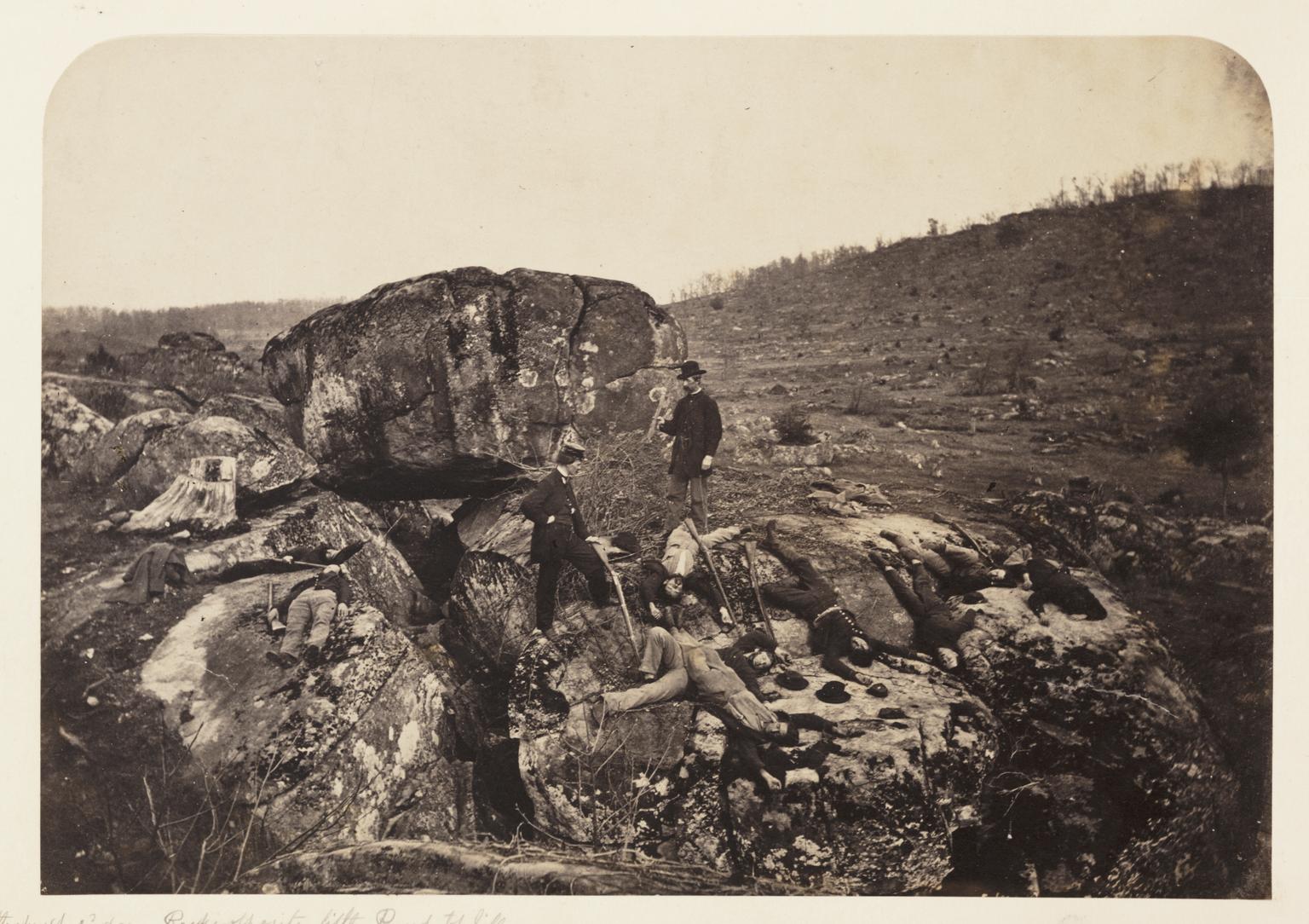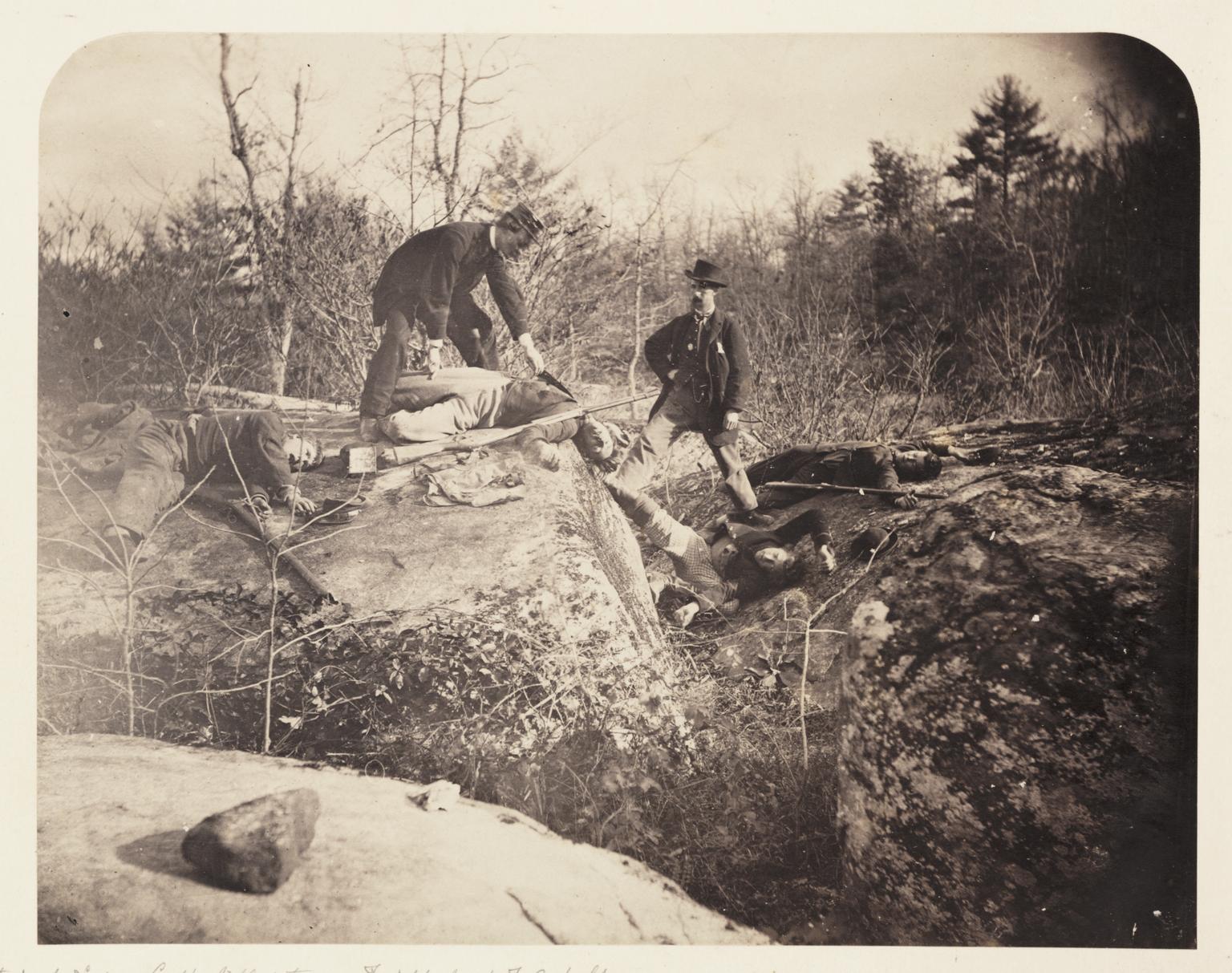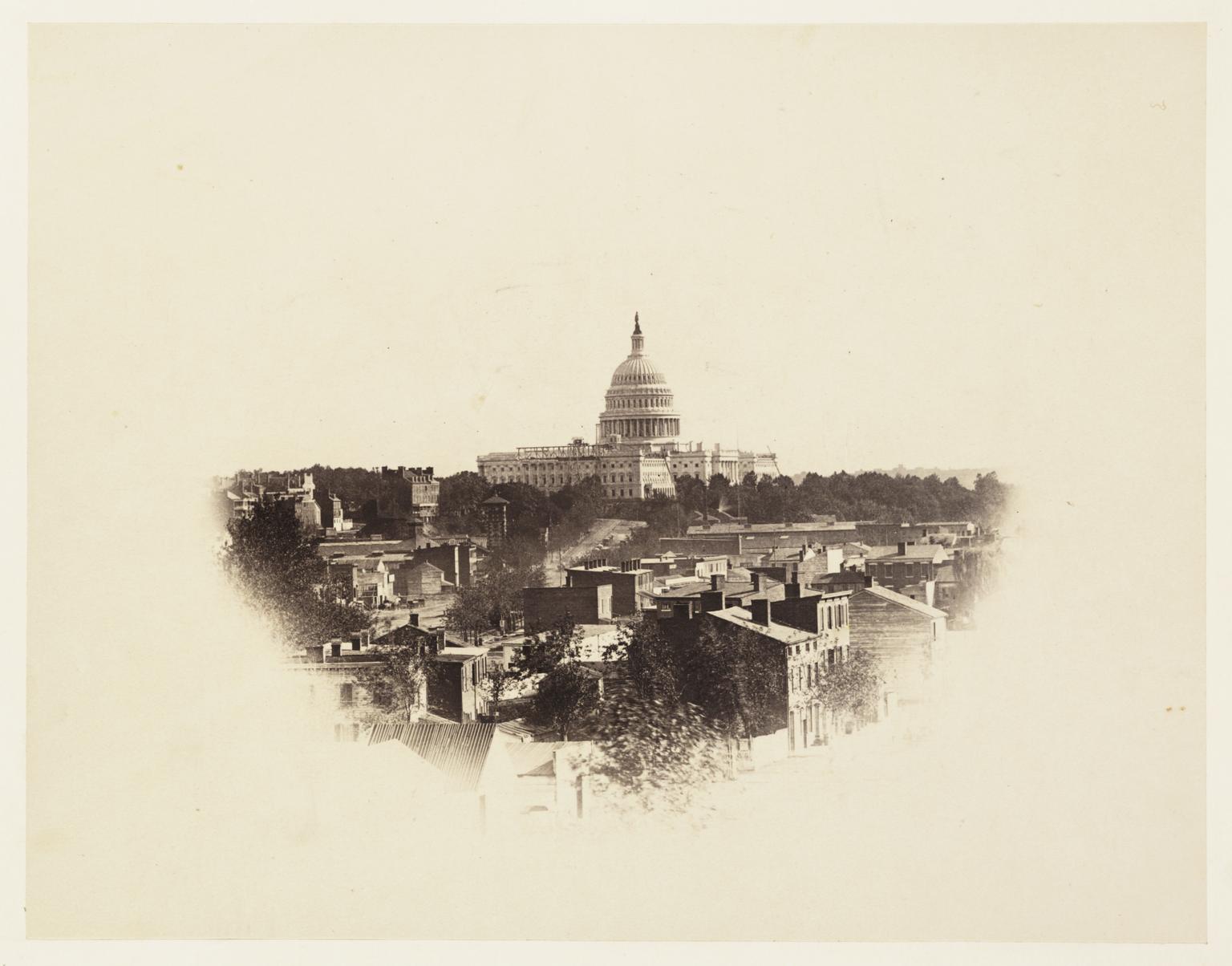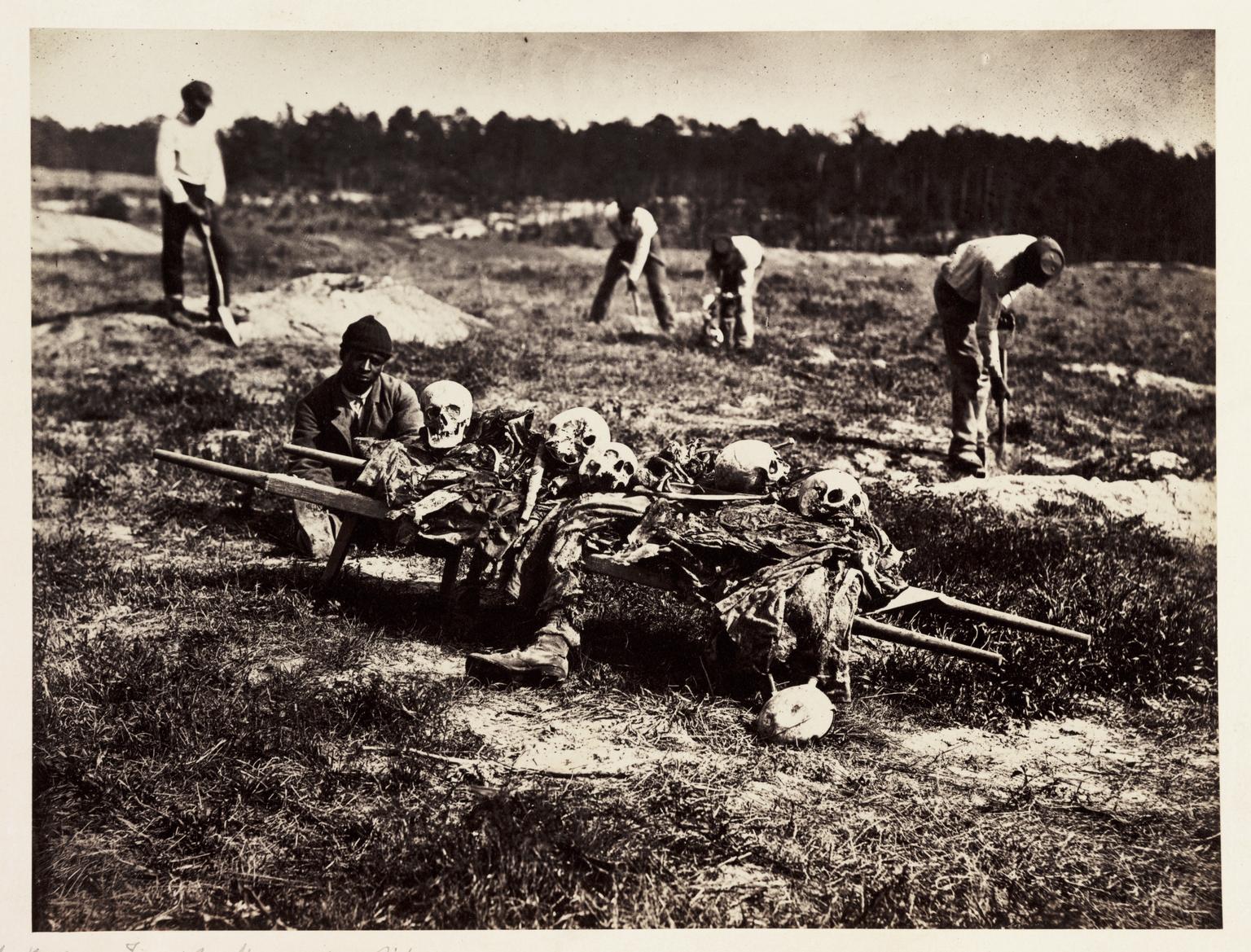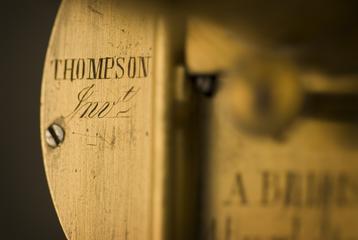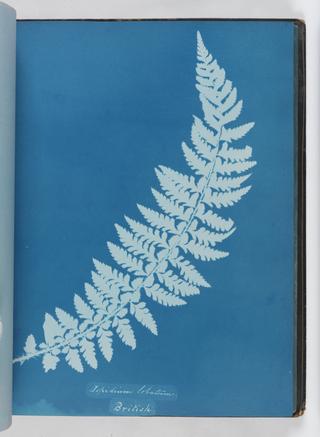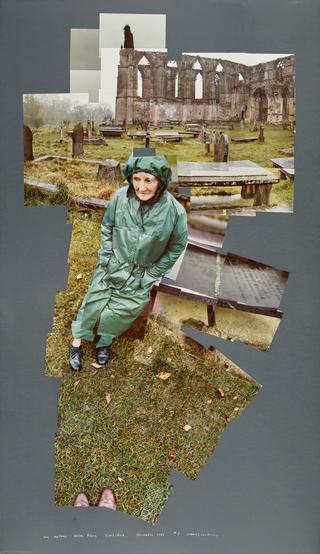
Federal Battery No1...
A photograph of a heavy gun battery at Yorktown, Virginia, America, by Alexander Gardener (1821-1882) from a negative produced by Wood and Gibson (active 1860s) in May 1862. This photograph is from an album entitled 'Canada and the United States.1867' by John Downes Rochfort (1825-1885), who toured Canada and America in 1867.
More
A photograph of a heavy gun battery at Yorktown, Virginia, America, by Alexander Gardener (1821-1882) from a negative produced by Wood and Gibson (active 1860s) in May 1862. This photograph is from an album entitled 'Canada and the United States.1867' by John Downes Rochfort (1825-1885), who toured Canada and America in 1867.
These heavy guns were used during the inconclusive siege of Yorktown between 5 April 5 and 4 May 1862. A small Confederate force in the town stopped a much larger Union army from marching on the Confederate capital at Richmond.
- Materials:
- paper
- Object Number:
- 1995-5001/1/22
- type:
- photograph
- Image ©
- The Board of Trustees of the Science Museum

